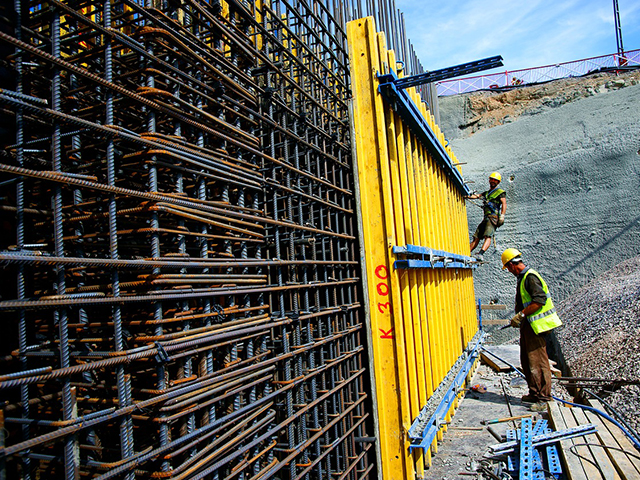Scaffold height regulations include all the rules established to ensure the safety of scaffolding systems to be used in the construction sector. This regulation comprehensively outlines the safety standards that must be adhered to during the installation, dismantling, and use of scaffolding systems.
Scaffold height regulations aim to prevent workplace accidents and to ensure that employees work in a safe environment. The provisions of this regulation include the necessary precautions to be taken while working at heights, the use of safety equipment, and the training requirements for workers.
External Scaffolding Calculation Method
The external scaffolding regulation encompasses all the rules and procedures created to ensure the safety of workers in the construction sector. The objective of this regulation is to define the technical standards and safety measures that must be followed during the installation, dismantling, and use of scaffolding systems to prevent potential workplace accidents. Additionally, the regulation includes critical elements such as regular inspections of these systems, the use of appropriate materials, and the training of workers.
The purpose of the external scaffolding calculation process is to determine the necessary materials and area required for the safe and functional installation of a scaffold system for a structure. This process involves paying attention to several key factors. One of the most crucial factors is the correct application of mobile scaffolding installation procedures.
The scaffolding calculation process involves several critical steps. During this process, factors such as the height of the structure, the width of the façade, and the load-bearing capacity must be taken into account. Considering these elements is vital for selecting the correct scaffolding system and implementing appropriate safety measures.
The stages of the external scaffolding calculation process are as follows:

Throughout the scaffolding installation process, these calculations not only define the required quantity of materials but also include measures to minimize safety risks.
Suspended scaffolding and mobile scaffolding options are particularly practical solutions preferred in narrow areas or high-rise buildings.
Calculation of Scaffolding Quantities
When calculating the scaffolding quantities, the size of the project and the architectural features of the structure play a crucial role. This calculation includes not only the total square meter area required for scaffolding installation but also the quantity of scaffolding components to be used.
In secure scaffolding installation projects, the scaffolding quantity calculation must be performed with particular precision to prevent material waste and maintain safety standards.
Some of the key factors to consider when calculating scaffolding quantities include. The total height of the structure and the width of the façade are measured to determine the required amount of scaffolding materials.
The maximum load capacity of the scaffolding system must be accurately calculated to ensure that the selected materials can adequately support the intended loads.
Each component, including support legs, platforms, and connectors, must be calculated separately to ensure comprehensive coverage.
The materials used must be of high quality and comply with safety standards, providing long-term cost benefits.
The quantity calculation also affects labor planning and installation duration. Accurate calculations facilitate smooth project execution and minimize potential disruptions.
Accurate calculation of scaffolding quantities is essential to ensure the safe and efficient use of scaffolding systems. By thoroughly analyzing the site, selecting appropriate materials, and conducting precise calculations, project managers can effectively mitigate risks and optimize resource usage.
For more detailed information about scaffold height regulations, you can contact Gürbüz İskele.






